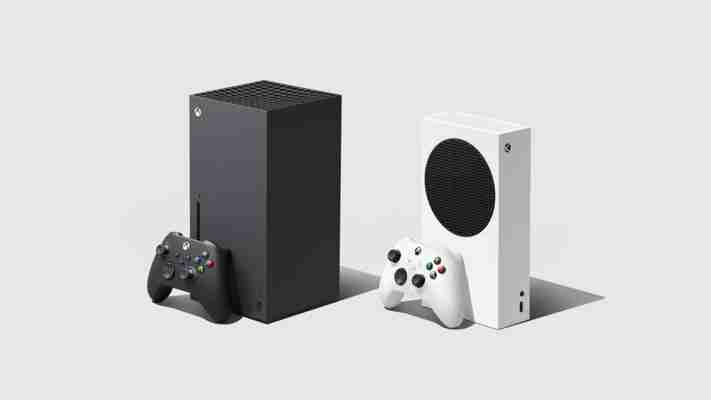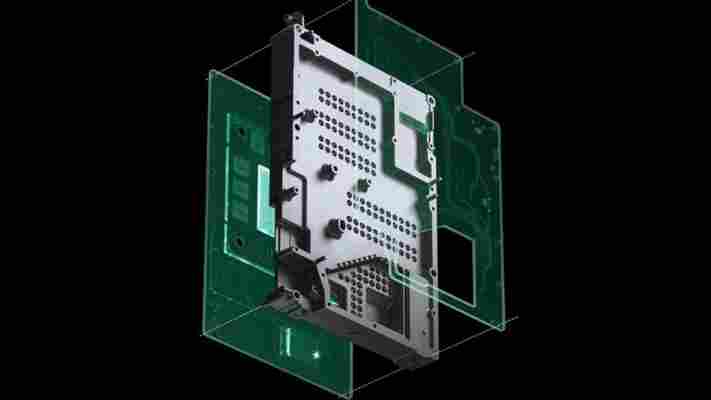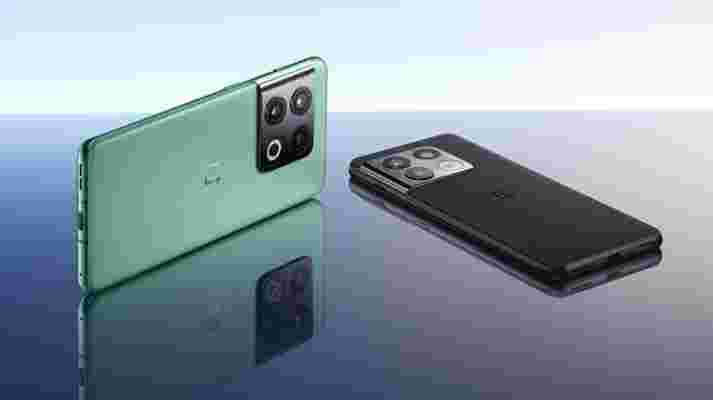There is a pleasing circularity to the recent career of Pip White, who in November took on the role of SVP & General Manager EMEA at collaboration software company Slack .
Previously, White had spent a number of years running the sales operation at CRM titan Salesforce, before departing for a job at Google’s cloud arm. In the summer of 2021, Salesforce finalized an acquisition of Slack worth $28 billion, and now White finds herself in familiar company.
A few months into her new role, TechRadar Pro spoke to White about Slack’s ambitions for the coming year, with the pandemic continuing to confine many workers to their home offices.
The official party line goes a little something like this: Slack is the only viable digital headquarters for the hybrid working era, wherein we will all work in a fluid and asynchronous manner from a variety of locations. It’s a message we’ve heard many times over by now.
However, White also offered insight into the nature of the company’s relationship with its new parent organization, as well as the way it perceives its competition in the collaboration sector.
Slackforce
Asked why she traded in her position at Google Cloud for one at Slack, White explained that the acquisition by Salesforce played a large part, as did the platform’s role in the evolution of work.
“The opportunity to lead Slack in EMEA was a compelling one, especially in the context of the integration into Salesforce and the doors that has opened from an existing customer and growth perspective,” she explained.
“It was also about where we are in the world right now, in terms of the way people are thinking about different ways of working. Slack presents a really interesting opportunity at the forefront of that transformation.”
Having rolled out Slack internally prior to the acquisition, Salesforce was already equipped with a “really good feel for the technology”, White told us. And in future, the new parent company will help guide product development, as well as pursuing opportunities relating to the integration of Slack and Salesforce products.

Slack founder and CEO Stuart Butterfield now reports in to Bret Taylor, who was recently appointed co-CEO at Salesforce. White describes this relationship as a “tight connection and collaboration” from a product perspective.
“It’s a case of collaboration, not of Salesforce taking over, or vice versa,” said White. “It’s about what’s in the best interests of our customers and how we can help them on this hybrid working journey.”
“Slack will be central to minimizing disruption and accelerating the opportunity for collaboration in this new digital economy, and even more so as a result of the new use cases we’ve been exploring since the acquisition.”
This may well prove to be the case, but Slack will first have to see off increasingly stiff competition from a number of directions.
What competition?
As a result of the pandemic and shift to remote working , the collaboration and video conferencing market has never been hotter, nor more competitive. According to a recent survey from Gartner , there has been a 44% rise in the use of collaboration tools since 2019.
These kinds of services have also become increasingly amorphous over the last couple of years, as the largest players continue to borrow features and design concepts from one another. In a venn diagram that maps out functionality, platforms such as Microsoft Teams , Zoom , Slack and others would overlap significantly.
However, White doesn’t accept the notion that Slack can be easily compared with other services, nor that the platform faces serious competition. Asked specifically about the rivalry between Slack and Microsoft Teams, she told us: “it’s not necessarily an apples to apples comparison”.
This felt a touch disingenuous, given the commonalities between the two services; both offer text chat, group channels, audio calls, file sharing and integrations with third-party apps. In our mind, someone could be forgiven for thinking Slack and Teams are fruit of much the same tree.
In 2020, Slack also filed an antitrust complaint against Microsoft over the bundling together of Teams and Office 365 services, which the company says amounts to an unfair advantage. Both White and Slack’s communications agency refused to be drawn into discussing the legal dispute, which is yet to be resolved, but its existence implies there is rivalry there.
Nonetheless, White is ardent that Slack offers a unique value proposition, courtesy of its push towards asynchronous collaboration , short and spontaneous huddles in place of time-hungry meetings, and rich third-party integrations.
“We will continue to innovate around these themes,” she told us. “All employers are thinking about how to approach cultural shifts and flux in the working environment; a lot of employees want different things.”
“The situation is going to continue to evolve, so it’s about anticipating change and being supremely flexible. Technologies that allow for asynchronous working away from the physical office will enable that journey.”
An automated future
Regardless of whether Slack faces direct opposition from services like Teams, however, the company obviously has a clear vision for the future of its software.
As announced in mid-November , Slack has “rebuilt and reengineered” large parts of the platform from the ground up. The main improvement is the introduction of a library of “building blocks” to the Slack Workflow Builder, which make it simpler to develop automations that eliminate the need to juggle many different business apps.
Building these automations requires no coding whatsoever; the Lego-like blocks can be chained together via a simple drag-and-drop mechanism, which means workers don’t have to rely on overburdened developer teams to code-in new functionality.

If there is no available building block that fulfils a particular task, a developer can step in to create one on an employee’s behalf. This new block will then become available across the organization and can be “remixed” into various other workflows.
According to White, customers are beginning to utilize this and other new functionality to great effect, in ways that are not possible on any other platform.
“We see the ability to bring work into channel as a key differentiator for us. The way in which most of our customers are starting to use Slack in anger, so to speak, is all about the ability to collaborate endlessly from one process to another,” she said.
“We’re only beginning to see the start of changes to ways of working. A lot has changed in some sectors and digital transformation has undoubtedly been accelerated, but we’re still at the start of this journey. I think it’s a great opportunity for all of us to reconsider the ways in which we work.”
Xbox Series X vs Xbox Series S: which Xbox is right for you?
Should you buy the Xbox Series X or the Xbox Series S ? If you haven’t done much research about Xbox consoles, you might think these two look similar. But there are many big differences between their features, power and overall capabilities.
As with all console battles, there’s no clear winner here when it comes to the Xbox Series X vs Xbox Series S because the one that’s right for you will depend on your preferences, your budget and what you’re looking for from a gaming system. For example, do you really need a disc-drive? And how high is native 4K output in your list of priorities?
We've reviewed both the Xbox Series X and Xbox Series S games consoles in depth, which means we’re familiar with the strengths and weaknesses of each one. Our opinion is that the Xbox Series X is undoubtedly the powerhouse of the two. Next to the PS5 it’s the best console you can buy today. But the Xbox Series S has a lower price on its side thanks to its discless offering. We’ll help you decide which of the two you should buy to suit both your budget and your setup.
Xbox Series X vs Xbox Series S: key differences
If we had to highlight three key differences between the consoles, it should be these: the Xbox Series X has a 4K UHD Blu-ray drive that's capable of playing physical games and movies while the Xbox Series S does not.
The Xbox Series X has a large 1TB SSD that can store, on average, around 16 games while the Xbox Series S has a 512GB SSD that only stores around four to five; and the Xbox Series X renders games in native 4K at 60 frames-per-second, while the Xbox Series S targets 1440p.
Otherwise, both will have the same user interface, the same controller and the same Xbox Velocity Architecture that enables features like Quick Resume. Both have the same media apps like Netflix, Amazon Prime Video, Hulu and more, and more importantly, both can play exactly the same games.
From what we’ve seen so far, people are drawn to the sheer power of the Xbox Series X. But don’t overlook the advantages of the more affordable model. Both work well and both can serve a different audience.
Let's break them down even further.
First up is the Xbox Series X, which is Microsoft’s flagship console. It’s capable of 4K graphics and is currently one of the most powerful consoles available. On paper the specs are impressive, and it has a compact tower-style design that manages to be both unique and unobtrusive. It’s expensive, though, at $499 / £449 / AU$749, the same price as the PS5 .
The Xbox Series S is far more affordable and a less powerful alternative for you to consider. It’s digital-only, so you’ll be at the mercy of the Microsoft Store for any purchases you make. That said, Xbox Game Pass , Microsoft's Netflix-like subscription service and Project xCloud , lets gamers stream games from the cloud and alleviates some of the digital-only restrictions. Overall, the Series S' price point is aimed at those who are willing to compromise on power for a much better price.
Xbox Series X vs Xbox Series S price

The Xbox Series X costs $499 / £449 / AU$749 and launched on November 10, 2020. The console is packed with cutting-edge technology, and goes head-to-head with the PS5 , which also costs $499. The price point may be too expensive for some, but it puts the Xbox Series X in a strong position to compete with Sony’s hardware.
The Xbox Series S launched alongside the Series X and its price is much lower at just $299.99 / £249.99 / AU$499. A $200 saving will be very appealing to the more cost-conscious consumer.
Xbox Series X vs Xbox Series S specs

The Xbox Series X is a beast of a console that's truly brought us into the latest generation of gaming. Here’s what’s inside the diminutive tower of power:
With a 12 teraflop GPU capable of up to 120 frames per second, the Xbox Series X is twice as powerful as the Xbox One X , Microsoft’s former flagship console. It supports various exciting next-gen features such as ray tracing, variable rate shading and even support for 8K resolution.
The Xbox Series X makes the wait when booting up games or loading new levels a thing of the past thanks to its custom designed super-fast NVMe SSD. The SSD is part of the console’s new Velocity Architecture , which allows multiple games to be suspended in the background while you’re playing something entirely different. Everything is more responsive and snappier as a result, too.
Microsoft is also trying to make latency a thing of the past on Xbox Series X. Forward-thinking features such as Auto Low Latency Mode (ALLM), communication improvements to the Xbox controller, and Variable Refresh Rate (VRR) support take full advantage of TVs with HDMI 2.1 support.
In comparison, here are the Xbox Series S specs:
The Xbox Series S packs a lot of power for such a small box. The console targets a resolution of 1440p instead of native 4K (some games do support native 4K, though), and is capable of 120fps gaming. It has an almost identical CPU to the Xbox Series X, but the GPU is considerably less powerful, and it comes with 10GB of GDDR6 RAM instead of 16GB.
That might sound like a big compromise on paper, but remember the Xbox Series S is targeting 1440p/60fps instead of 4K/60fps. This means it needs less power to reach its pixel count, but it can still deliver all the next-gen features Microsoft is focusing on like ray tracing and 120fps.
There’s no disk drive, of course, and the storage is almost halved compared to the Xbox Series X. That’s admittedly concerning for a digital-only model, but Microsoft is undoubtedly hoping people are taking advantage of Project xCloud which involves no downloads at all as game’s are streamed from Microsoft’s remote data servers.
The storage of both consoles can be expanded, however. Microsoft is selling a 1TB proprietary expansion card that plugs into the back of the console. Xbox One games can also be stored on a standard external hard drive to help free up space.
The Xbox Series S and Xbox Series X also support Spatial Sound, including Dolby Atmos , and Dolby Vision via streaming apps at launch. Dolby Vision support for gaming was introduced post-launch but is now available.
Xbox Series X vs Xbox Series S games

So here’s what you need to know: both the Xbox Series X and Xbox Series S are able to play exactly the same games, although they’ll undoubtedly look best on Xbox Series X.
The kind of compromises we expect to see on Xbox Series S will focus on the drop to 1440p resolution from 4K, and maybe some more minor changes that probably won’t be as noticeable.
Both consoles offer full backwards-compatibility with Xbox One , Xbox 360 and original Xbox games. So while we're still waiting for some of the biggest next-gen exclusives like Fable 4 and Halo Infinite to launch, there's still plenty to play, particularly if you have a large library of titles already. If you own a lot of physical copies, though, be mindful that these won’t work on Xbox Series S due to the lack of disc drive.
Xbox Series X vs Xbox Series S verdict
Microsoft may be onto something here. By offering two consoles that target different audiences, consumers ultimately have more choice and more ways to enter into the Xbox ecosystem. If only the best will do, pick up an Xbox Series X, but be prepared to pay a premium. Want to enter the next generation without breaking the bank? The Xbox Series S is a fantastic entry point, and one with a seriously tempting price.
Microsoft seems to have created two appealing iterations of its console, without one appearing less attractive than the other. Crucially, it will now be able to fight the PS5 on two fronts: price and performance. The Xbox Series S costs significantly less than the PS5.
By creating an argument for Xbox Series X vs Xbox Series S, Microsoft has essentially done its best to turn consumers’ heads where it might not have done so were it a straight fight between Xbox Series X and PS5 . And that’s surely a win for Xbox as a whole.
Samsung Galaxy S22 and Galaxy Tab S8 exact announcement time leaked
It looks like the Samsung Galaxy S22 range and the Samsung Galaxy Tab S8 range might both be announced on the same day, and that day is fast approaching, as it’s reportedly February 9.
That’s according to Ice Universe (a leaker with a solid track record) who posted this claim on Weibo (a Chinese social network).
They claim to be 100% sure of this and add that the unveiling will kick off at 11pm Beijing time, which is 7am PT / 10am ET / 3pm GMT, or for those in Australia it’s 2am on February 10 AEDT.
While we’d take this claim with a pinch of salt, the source is reputable and sounds very sure of it, so there’s a good chance this is accurate. We’ve also heard a February 9 launch for the Samsung Galaxy S22 range rumored elsewhere , while multiple sources have previously said that the Samsung Galaxy Tab S8 will land alongside it .
So this seems likely. The one thing that makes us less sure is that at least one source has instead pointed to a February 8 announcement . That’s only one day out, but it’s still a different day. This probably isn’t a time zone issue either, as South Korea (Samsung’s home country) and China (where Ice Universe is from) are only an hour apart.
Still, of the two we’d say February 9 seems more likely at this point, as there’s more evidence pointing in that direction.

Analysis: a busy time for smartphones
After a quiet period towards the end of 2021, smartphone season is now in full swing, as the OnePlus 10 Pro and the Xiaomi 12 range are also likely to get global launches soon (having already been unveiled for China).
We’re expecting to see the standard OnePlus 10 before long as well, and MWC 2022 (the biggest mobile trade show) kicks off at the end of February, with other phones and tablets likely to be announced there.
Even Apple could be getting in on the fun, as while the iPhone 14 range probably won’t land until September, we could see the iPhone SE 3 in or around March, so there will soon be a lot of exciting new handsets to choose from.
Via Phone Arena